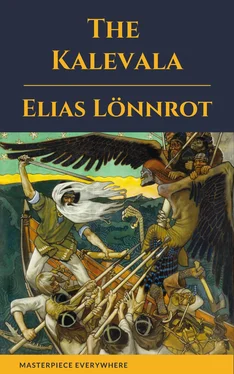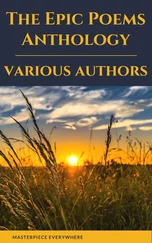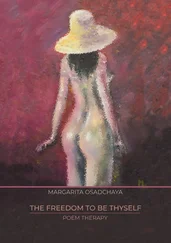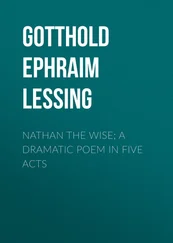By a series of suffixes to the names of human beings, birds, fishes, trees, plants, stones, metals, and even actions, events, and feelings, diminutives are obtained, which by their form, present the names so made in different colors; they become more naïve, more childlike, eventually more roguish, or humorous, or pungent. These traits can scarcely be rendered in English; for, as Robert Ferguson remarks: "The English language is not strong in diminutives, and therefore it lacks some of the most effective means for the expression of affectionate, tender, and familiar relations." In this respect all translations from the Finnish into English necessarily must fall short of the original. The same might be said of the many emotional interjections in which the Finnish, in common with all Ugrian dialects, abounds. With the exception of these two characteristics of the Ugrian languages, the chief beauties of the Finnish verse admit of an apt rendering into English. The structure of the sentences is very simple indeed, and adverbs and adjectives are used sparingly.
Finnish is the language of a people who live pre-eminently close to nature, and are at home amongst the animals of the wilderness, beasts and birds, winds, and woods, and waters, falling snows, and flying sands, and rolling rocks, and these are carefully distinguished by corresponding verbs of ever-changing acoustic import. Conscious of the fact that, in a people like the Finns where nature and nature-worship form the centre of all their life, every word connected with the powers and elements of nature must be given its fall value, great care has been taken in rendering these finely shaded verbs. A glance at the mythology of this interesting people will place the import of this remark in better view.
In the earliest age of Suomi, it appears that the people worshiped the conspicuous objects in nature under their respective, sensible forms. All beings were persons. The Sun, Moon, Stars, the Earth, the Air, and the Sea, were to the ancient Finns, living, self-conscious beings. Gradually the existence of invisible agencies and energies was recognized, and these were attributed to superior persons who lived independent of these visible entities, but at the same time were connected with them. The basic idea in Finnish mythology seems to lie in this: that all objects in nature are governed by invisible deities, termed haltiat , regents or genii. These haltiat , like members of the human family, have distinctive bodies and spirits; but the minor ones are somewhat immaterial and formless, and their existences are entirely independent of the objects in which they are particularly interested. They are all immortal, but they rank according to the relative importance of their respective charges. The lower grades of the Finnish gods are sometimes subservient to the deities of greater powers, especially to those who rule respectively the air, the water, the field, and the forest. Thus, Pilajatar, the daughter of the aspen, although as divine as Tapio, the god of the woodlands, is necessarily his servant.
One of the most notable characteristics of the Finnish mythology is the interdependence among the gods. "Every deity", says Castrén, "however petty he may be, rules in his own sphere as a substantial, independent power, or, to speak in the spirit of The Kalevala , as a self-ruling householder. The god of the Polar-star only governs an insignificant spot in the vault of the sky, but on this spot he knows no master."
The Finnish deities, like the ancient gods of Italy and Greece, are generally represented in pairs, and all the gods are probably wedded. They have their individual abodes and are surrounded by their respective families. The Primary object of worship among the early Finns was most probably the visible sky with its sun, moon, and stars, its aurora-lights, its thunders and its lightnings. The heavens themselves were thought divine. Then a personal deity of the heavens, coupled with the name of his abode, was the next conception; finally this sky-god was chosen to represent the supreme Ruler. To the sky, the sky-god, and the supreme God, the term Jumala (thunder-home) was given.
In course of time, however, when the Finns came to have more purified ideas about religion, they called the sky Taivas and the sky-god Ukko . The word, Ukko , seems related to the Magyar Agg , old, and meant, therefore, an old being, a grandfather; but ultimately it came to be used exclusively as the name of the highest of the Finnish deities. Frost, snow, hail, ice, wind and rain, sunshine and shadow, are thought to come from the hands of Ukko. He controls the clouds; he is called in The Kalevala , "The Leader of the Clouds," "The Shepherd of the Lamb-Clouds," "The God of the Breezes," "The Golden King," "The Silvern Ruler of the Air," and "The Father of the Heavens." He wields the thunder-bolts, striking down the spirits of evil on the mountains, and is therefore termed, "The Thunderer," like the Greek Zeus, and his abode is called, "The Thunder-Home." Ukko is often represented as sitting upon a cloud in the vault of the sky, and bearing on his shoulders the firmament, and therefore he is termed, "The Pivot of the Heavens." He is armed as an omnipotent warrior; his fiery arrows are forged from copper, the lightning is his sword, and the rainbow his bow, still called Ukkon Kaari . Like the German god, Thor, Ukko swings a hammer; and, finally, we find, in a vein of familiar symbolism, that his skirt sparkles with fire, that his stockings are blue, and his shoes, crimson colored.
In the following runes, Ukko here and there interposes. Thus, when the Sun and Moon were stolen from the heavens, and hidden away in a cave of the copper-bearing mountain, by the wicked hostess of the dismal Sariola, he, like Atlas in the mythology of Greece, relinquishes the support of the heavens, thunders along the borders of the darkened clouds, and strikes fire from his sword to kindle a new sun and a new moon. Again, when Lemminkainen is hunting the fire-breathing horse of Piru, Ukko, invoked by the reckless hero, checks the speed of the mighty courser by opening the windows of heaven, and showering upon him flakes of snow, balls of ice, and hailstones of iron. Usually,
however, Ukko prefers to encourage a spirit of independence among his worshipers. Often we find him, in the runes, refusing to heed the call of his people for help, as when Ilmatar, the daughter of the air, vainly invoked him to her aid, that Wainamoinen, already seven hundred years unborn, might be delivered. So also Wainamoinen beseeches Ukko in vain to check the crimson streamlet flowing from his knee wounded by an axe in the hands of Hisi. Ukko, however, with all his power, is by no means superior to the Sun, Moon, and other bodies dwelling in the heavens; they are uninfluenced by him, and are considered deities in their own right. Thus, Pæivæ means both sun and sun-god; Kun means moon and moon-god; and Tæhti and Ottava designate the Polar-star and the Great Bear respectively, as well as the deities of these bodies.
The Sun and the Moon have each a consort, and sons, and daughters. Two sons only of Pæivæ appear in The Kalevala , one comes to aid Wainamoinen in his efforts to destroy the mystic Fire-fish, by throwing from the heavens to the girdle of the hero, a "magic knife, silver-edged, and golden-handled;" the other son, Panu, the Fire-child, brings back to Kalevala the fire that bad been stolen by Louhi, the wicked hostess of Pohyola. From this myth Castrén argues that the ancient Finns regarded fire as a direct emanation from the Sun. The daughters of the Sun, Moon, Great Bear, Polar-star, and of the other heavenly dignitaries, are represented as ever-young and beautiful maidens, sometimes seated on the bending branches of the forest-trees, sometimes on the crimson rims of the clouds, sometimes on the rainbow, sometimes on the dome of heaven. These daughters are believed to be skilled to perfection in the arts of spinning and weaving, accomplishments probably attributed to them from the fanciful likeness of the rays of light to the warp of the weaver's web.
Читать дальше












